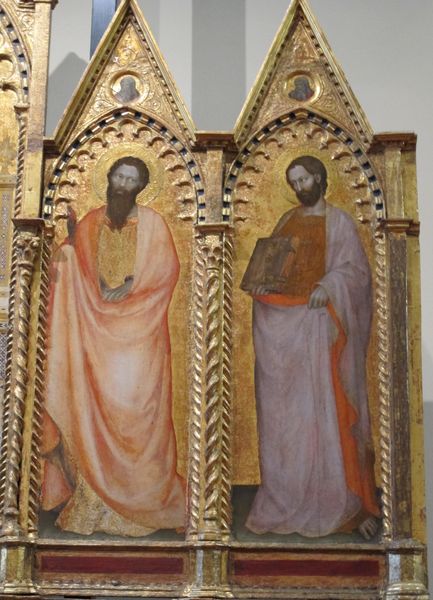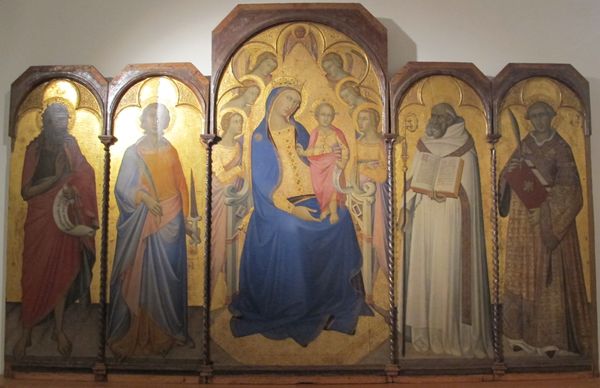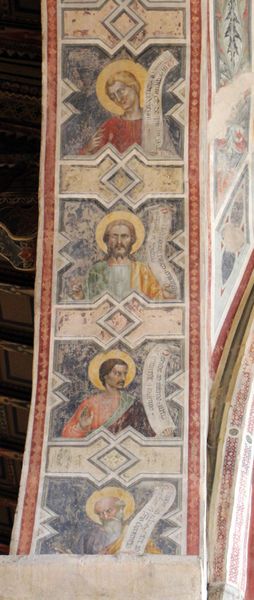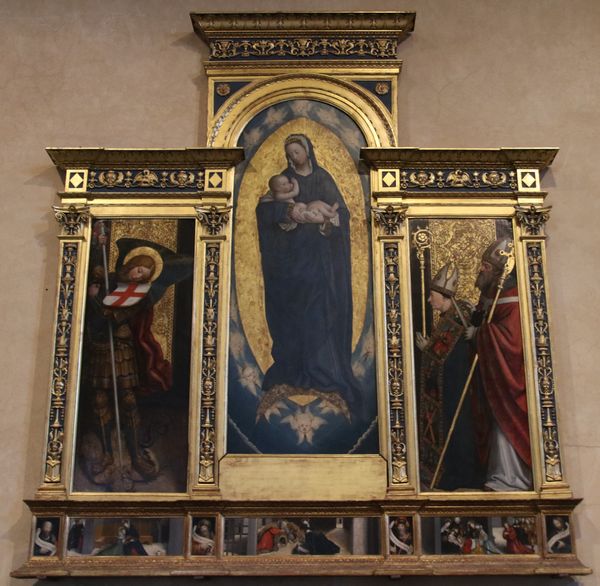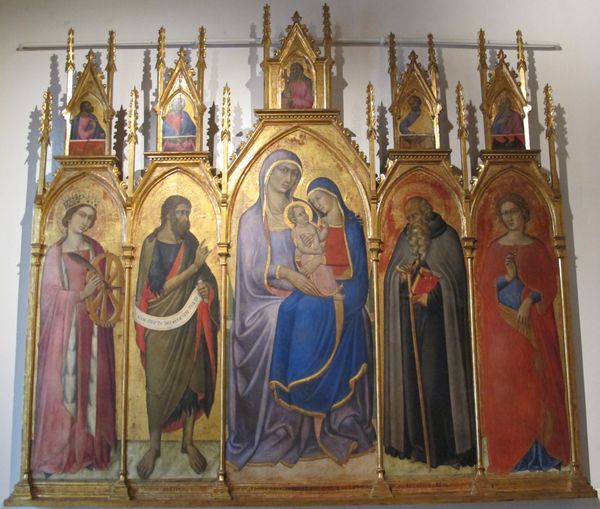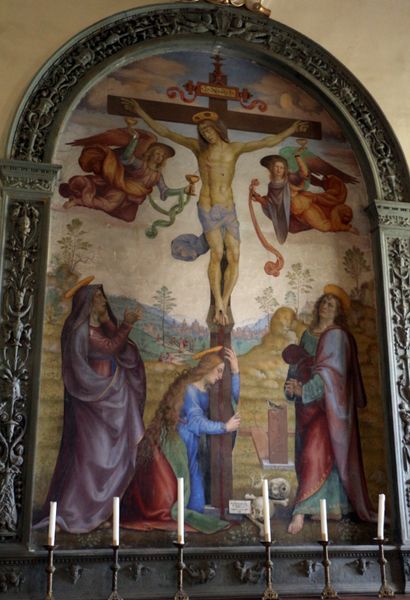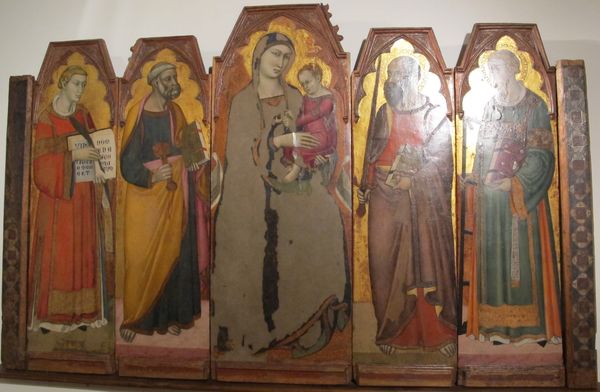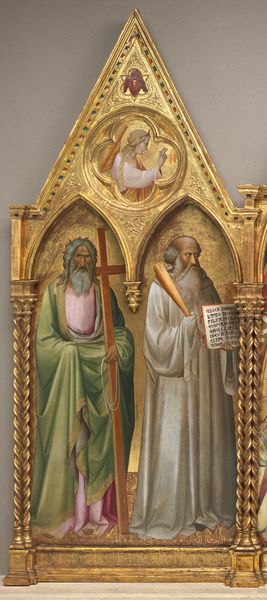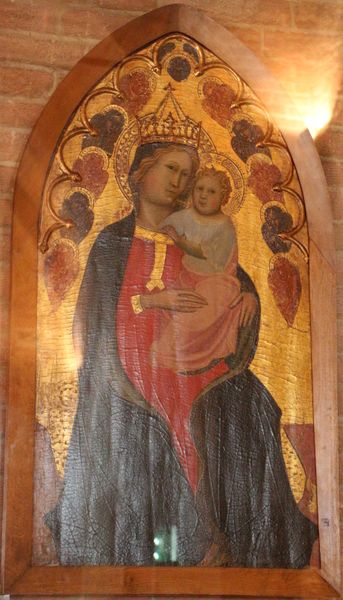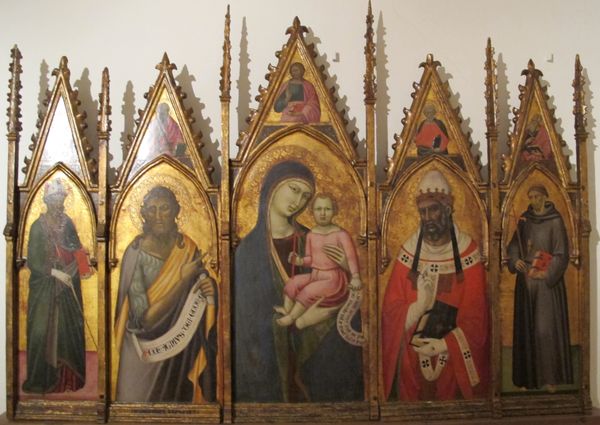
tempera, painting
#
portrait
#
tempera
#
painting
#
figuration
#
oil painting
#
christianity
#
history-painting
#
italian-renaissance
#
early-renaissance
Copyright: Public domain
These two paintings of saints were made by Filippo Lippi in Florence in the mid-15th century, probably using tempera on panel. In paintings like these, Florentine artists used religious imagery to define the ideal qualities of the city-state itself. Saints were thought to be protectors of the city and models for good citizens to imitate. We know from city records and religious texts of the period that the qualities of humility, devotion, and steadfastness exemplified by the saints were considered key to social stability. Notice the halos, these motifs identify the holy figures and act as markers of institutional authority within Florentine society at the time. To truly understand these paintings, we need to examine the religious and civic institutions that commissioned and displayed them. Art historians consult archival documents, religious treatises, and other historical sources to reveal the complex interplay between art, power, and belief in Renaissance Florence.
Comments
No comments
Be the first to comment and join the conversation on the ultimate creative platform.
